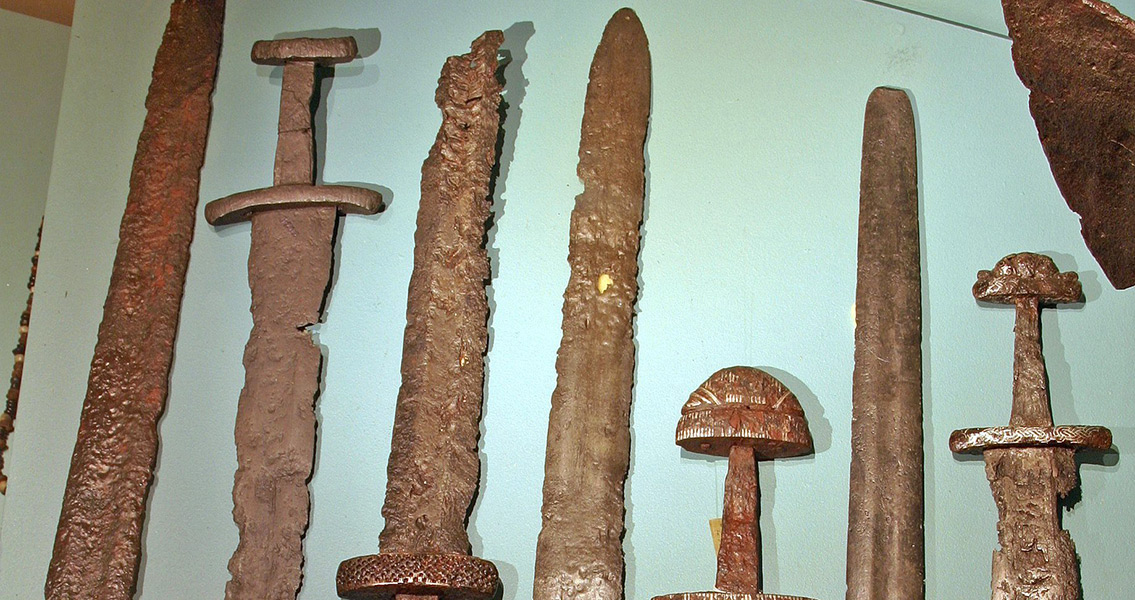<![CDATA[A gold-inlaid sword dating to the late Viking age has been unearthed from a burial mound in southern Norway, raising questions as to who owned the ornate, well-preserved weapon. Originally discovered in 2011 by archaeologists from the University of Oslo’s Museum of Cultural History, the 37-inch sword features a well-preserved hilt with gold details on the pommel and crossguard. The intricate designs and high quality craftsmanship lead researchers to believe it might have belonged to a wealthy Viking, possibly hand-picked by King Canute to fight in England against King Ethelred of England’s forces. Camilla Cecilie Wenn, the leader of the 2011 excavation, said that she knew even before excavation began on the burial ground that it was going to be an incredibly special find, according to an interview appearing in the Daily Mail. The size of the grave, compared to the nearly two dozen others within the burial ground, was much bigger and looked completely different – her team found evidence of post holes at the grave’s corners, indicating that at one time there had been a roof erected over it. This was a sure sign that the person buried within had been quite important in life, Wenn remarked. At first the excavation yielded little in the way of valuable artifacts. Fragmented silver coins bearing marks of Ethelred II’s mints were discovered, dating the burial to near the reign of the English king at the turn of the tenth century. However, along each side of the tomb archaeologists began to unearth two large metal objects, one of which was a large battle-axe; the other, it turns out, was the sword. Wenn said that the researchers’ pulses had begun to race when a clump of dirt fell away and revealed the sword’s golden hilt. Although still encased in rust, the archaeologist said the team knew immediately that the weapons were unusual – and noteworthy – finds. Mixed in among the rust, especially where it had formed on the blade, were the remnants of leather and wood – doubtlessly the remains of a scabbard or sheath – while the hilt itself was wrapped in silver thread, detailed in gold, and highlighted with a thread made from a copper alloy. The pommel and crossguard of the ancient weapon are adorned with symbols reminiscent of Christian iconography of the time, including a hand holding a cross on the top of the pommel and Latin lettering representing an unknown word. The discovery of a weapon so obviously created by a Christian craftsman in a pagan burial tomb leads the researchers to believe it might have been brought back from England or another part of Christendom as either a commissioned piece of art or a spoil of war. By comparison, the battle-axe interred on the opposite side of the tomb lacks any sort of ornamentation except for a brass-inlaid haft. Archaeologists say that the metal would have shone brilliantly on a sun-drenched battlefield. Image courtesy of Wikimedia Commons user: Arild Nybø ]]>
Ornate Viking Sword Unearthed in Southern Norway
